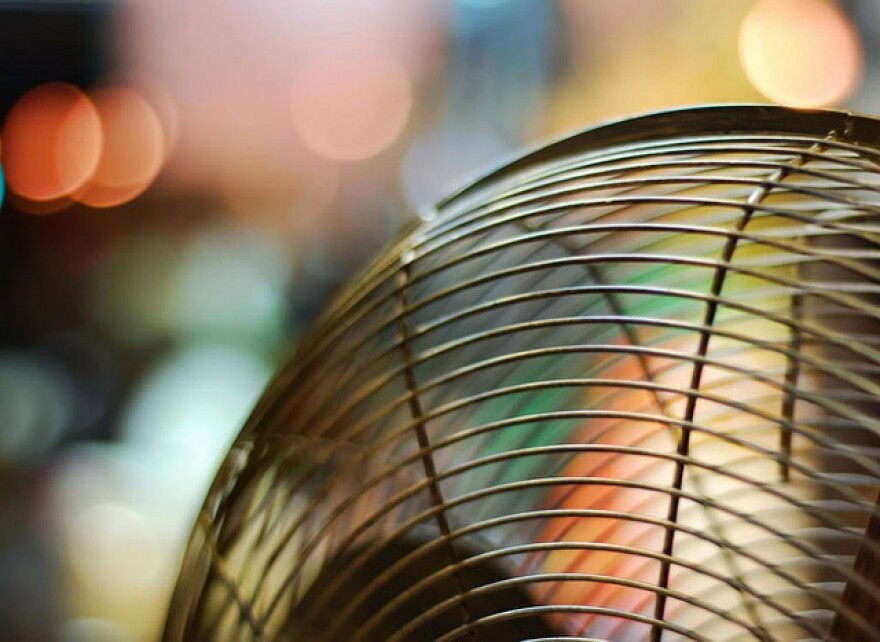Truth matters. Community matters. Your support makes both possible. LAist is one of the few places where news remains independent and free from political and corporate influence. Stand up for truth and for LAist. Make your year-end tax-deductible gift now.
Living At The Beach No Longer Means No AC Needed

For years, people living on the coast of Southern California waved off the idea of air conditioning. Instead, they had open windows and cool sea breezes.
But climate change is changing that, as extreme heat becomes more common. Now, coastal residents are buying air conditioners faster than people living inland or in the desert, according to data from the California Energy Commission.
In the coastal territory of Southern California Edison, AC usage jumped 36 percentage points between 1985 and 2015. That's 9 percentage points higher than SoCal Edison's desert territory.

So what changed?
Americans are increasingly saying they can't live without air conditioning.
According to a survey from Pew Research, in 2006 (the most recent year available), 70 percent of adults said AC was a necessity, up from 51 percent in 1996.
Also, it's hotter now than in the '80s. And it's going to get hotter still.
By the middle of the century, researchers at UCLA project that the average temperature in greater Los Angeles will be 4 degrees hotter than it was, on average, from 1981-2000.
And all areas will experience far more days above 95 degrees.
PEOPLE WHO FLIPPED THE SWITCH
For one Torrance resident, the breaking point for getting AC was seeing his 2-year old squirm uncomfortably in the heat earlier this month. "We couldn't do it anymore," Paul Zayat said. "Your home is supposed to be a place you go to relax and be comfortable, and we didn't have that feeling."
For Sandie Bass, who has lived between Santa Monica and Marina Del Rey for 18 years, it was when her mother, who lives in Chicago, told her she would never visit again until she got air conditioning.
I had to cave in two years ago. We have been out here for 10 and managed fine, completely unbearable now. The rest of my complex has gone out and bought portable units as well. Interior temps in apt can hit the mid 90's without cooling.
— Southern California OSINT (@SoCalOSINT) July 23, 2018
And for David Hermann, who lives less than two miles from the ocean in Redondo Beach, it was being miserable during the heatwave of July 2016.
"I've lived in Redondo since 2008," he said. Back then, he remembers "one time where we had a hot day. And now it's basically every fricking week."
THE SENSITIVITY FACTOR
A recent UC San Diego study also found that people in coastal San Diego County were much more sensitive to heat than people living inland. Residents there got heat sickness, experienced renal failure and had breathing problems at much lower temperatures than people living inland -- 73 degrees compared to 90 for people living in the desert.
"People living in hot environments are just physiologically better equipped to handle that," said lead author Kristen Guirguis, a climate researcher at the Scripps Institution of Oceanography.
But, unsurprisingly, Guirguis found that air conditioning helps, a lot. The thing is, a lot of people on the coast don't have it; even though AC ownership rates are increasing rapidly there, they're still far lower than they are inland.
In SoCal Edison's territory, just 51 percent of people living on the coast have AC, compared to 85 percent in the desert. It was similar in San Diego County, where less than 40 percent of coastal residents had central air compared to close to 100 percent in the desert.
My family and I live in South LA and considering it's only JULY, we finally sucked it up and bought A/Cs. The disappearance of our marine layer is noticeable. #LAHeatwave #climatechange
— Jackie Cornejo (@JackieCornejoG) July 23, 2018
INCOME AND RACE
According to the San Diego County study, people making more than $150,000 were three times more likely to have AC than the poorest residents.
Renters were less likely to have AC than homeowners.
And Latinos were also less likely to have AC than white people, although Latinos were less likely to go to the hospital from heat-related sickness than white people, despite having less access to AC.
This story is part of Elemental: Covering Sustainability, a multimedia collaboration between Cronkite News, Arizona PBS, KJZZ, KPCC, Rocky Mountain PBS and PBS SoCal.
News happens every day. Here at LAist, our goal is to cover the stories that matter to you and the community you live in. Now that we're part of KPCC, those stories (including this one you're on right now!) are made possible by generous people like you. Independent, local journalism isn't cheap, but with your support we can keep delivering it. Donate now.







